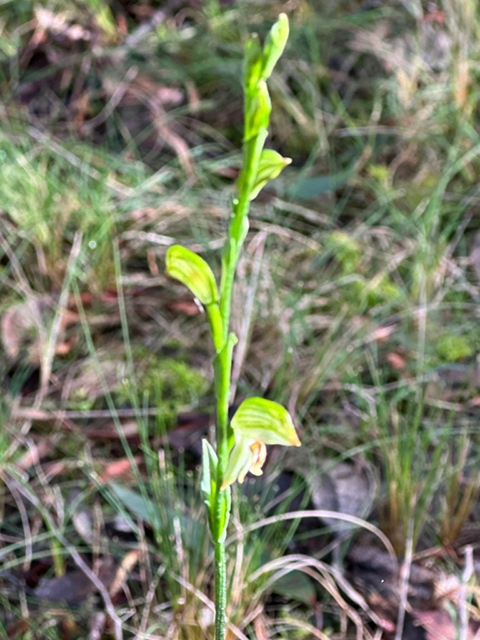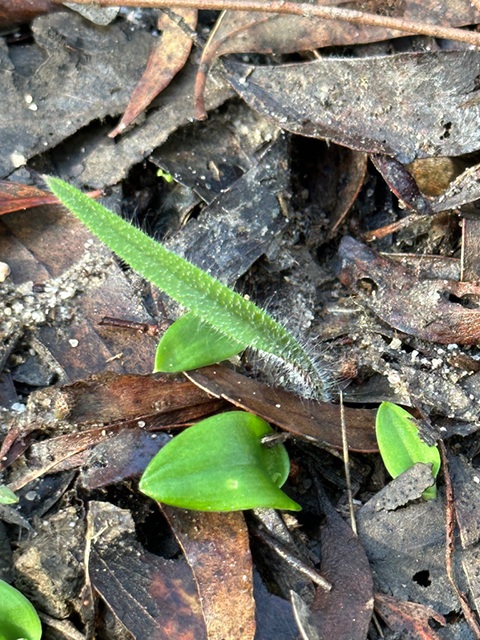Well it’s mid winter and a great time to be out in the field in between the wind and the rain showers to see what is happening in the orchid world.
The first of our Helmet orchids, Small Helmet Orchid, Corybas unguiculatus, did flower in June but you had to be lucky to see them as the ones we found at Moggs Creek were very scarce and very tiny. A few new sites were observed at Aireys Inlet but the number of orchids was very small.

Small Helmet Orchid
We are certainly more optimistic regarding our next species, Veined Helmet Orchid, C. diemenicus, that is already showing a good number of leaves and tiny buds, with one flower saying it was ready to be photographed for this orchid report. It is a most attractive little flower with the flared labellum which has a central white patch and coarsely toothed red-veined spreading margins.

Veined Helmet Orchid
The third species, Slaty Helmet Orchid, C. incurvus, which is the commonest of our helmet orchids, should be appearing in early July. It likes to grow in cool, damp, shady places.
After watching the tiny buds of Trim Greenhoods, Pterostylis concinna, teasing us to open during May, the first month of winter has seen this orchid produce extensive colonies of rosettes and flowers. It is a neat little orchid with its lateral sepals held high and the hood ending in a downward-pointing tip. If you look carefully under the tip you will see a forked brownish labellum just visible above the front opening. An important feature, but not easy to capture with the camera.

Trim Greenhood
Nodding Greenhoods, P.nutans, are coming into flower with many plants already showing the familiar nodding flowers. Extensive colonies of rosettes, buds and flowers can be seen throughout the district.

Nodding Greenhood
Tall Greenhoods, P. melagramma, are in good bud with one brave specimen at Moggs Creek already starting to flower. It is usually a late winter flowering orchid.

Tall Greenhood
Banded Greenhoods, P. sanguinea, can still be found, most with swollen ovaries showing pollination has taken place.

Banded Greenhood
Both species of gnat orchids, Small Gnat Orchid, Cyrtostylis reniformis, and Large Gnat Orchid, C. robusta are in good bud with flowers expected during July and August. Large Gnat Orchids usually flower earlier than their smaller relations.
So many orchid leaves are appearing after the recent rains including Wax-lip Orchids, Spider Orchids, Sun Orchids, Red Beaks and Hare Orchids, Leptoceras menziesii pretending to be in bud. The non-flowering plants of this species have a small tongue-like false bud but very few flowers appear unless growth is stimulated by fire.

Waxlip Orchid leaves

Spider Orchid and Hare Orchid leaves

Sun Orchid leaf

Red Beak leaf
Enjoy being out in the field and please let us know of any of your orchid discoveries. We are always keen to know where our orchids are growing.
All of our orchids are documented and photographed in Orchids of the Anglesea District. The new edition costing $30.00 is available from the Angair Natural History Centre on Monday and Thursday mornings, online on the Publications page and from Anglesea News & Lotto and Great Escape Books in Aireys Inlet.
Margaret MacDonald margmacmoggs@icloud.com Alison Watson alisonw577@gmail.com